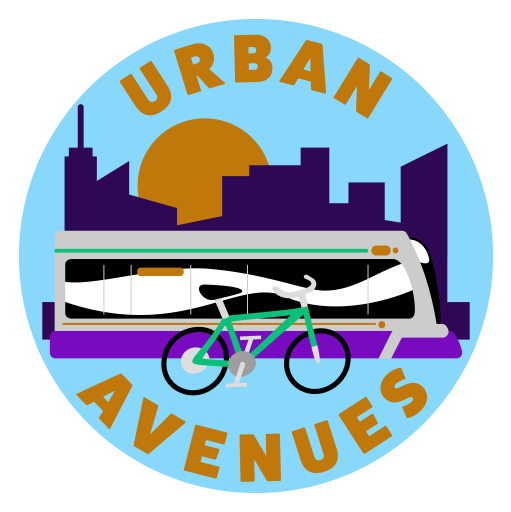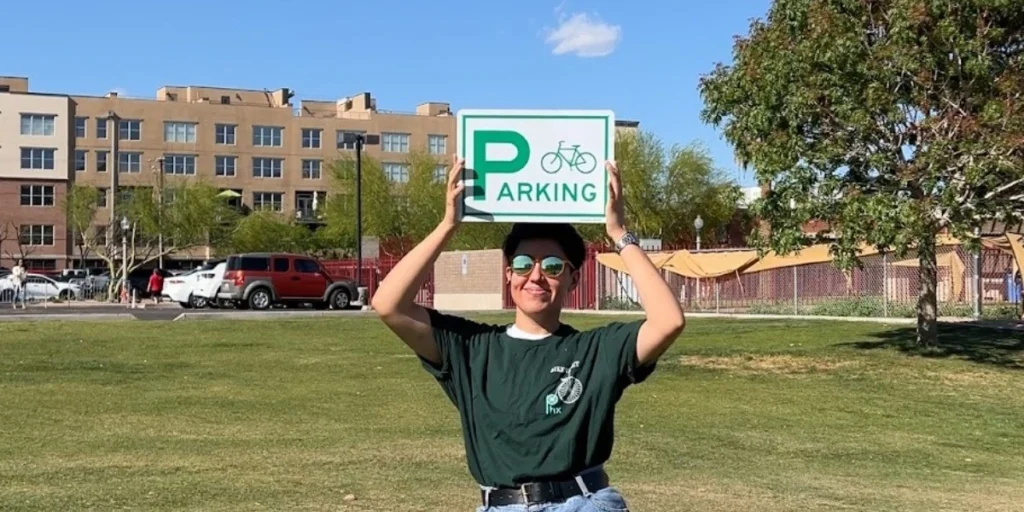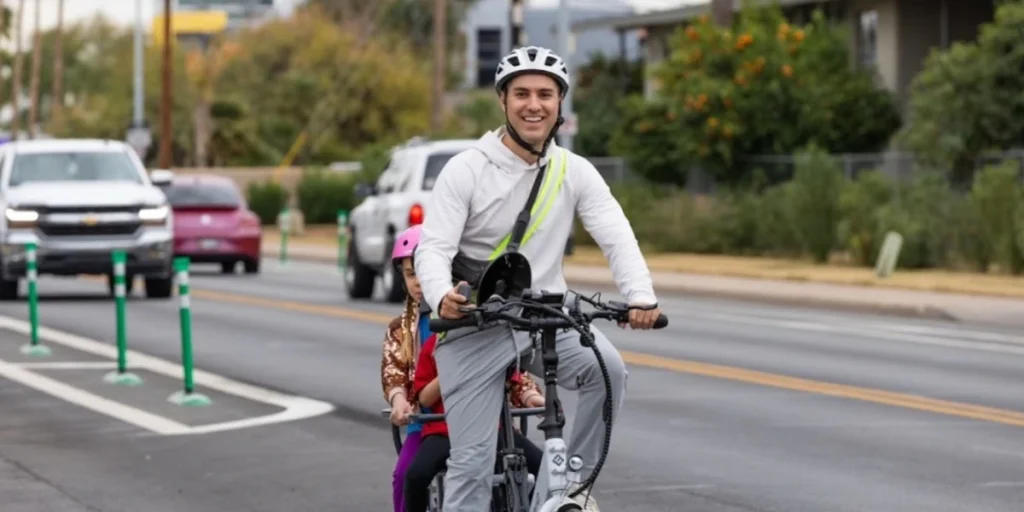Introduction
Can you tell us a little about your background and who you are?
My name is Whitney Mayfield and I was born and raised in the east valley of Arizona. I am the eldest daughter, an avid adventurer, hiker, and an urban planner.
My first jobs were all customer-facing and I’ve worked in auto insurance claims for eight years before making a career pivot to urban planning. I’m a proud two-time Sun Devil. I earned both of my degrees at ASU (also known as Arizona State University). I studied communications with a minor and sustainability and graduated in 2017 with my bachelors. My minor in sustainability was my introduction to ‘planning’. I took an emergency management class that taught me about urban resilience. After that, I gravitated toward geography and planning related topics. I found the MUEP program a few years after I graduated and began researching what urbanism was.
I began the master’s of Urban and Environmental Planning (MUEP) program fall of 2021. I took some theory, research methods, land use, etc classes, and worked on interesting projects. I have a favorite project that I’ll get into later. I did an awesome internship with Jessica Sarkissian at Upfront Planning when she was helping Yavapai County update its comprehensive plan. Through that work, I had the great opportunity to travel around the coolest rural towns and connect with the community on their needs and interests. That summer, Yavapai County easily became my favorite and made me realize that I love doing public engagement!
In my free time, I enjoy exploring national and state parks, going to concerts, and being active. I’m looking to get connected to some passion extracurricular as well.
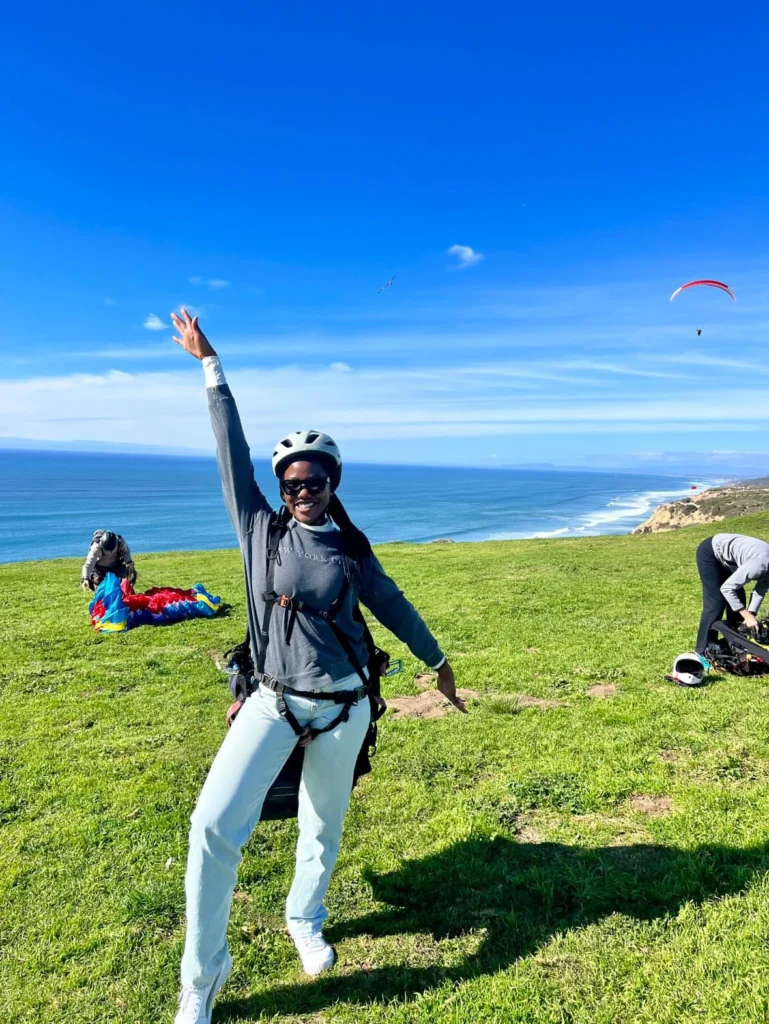
What role have cities played in shaping your personal and professional life?
I like to travel and I’m always amazed by the character of a city, development patterns, architectural design, and amenities a city has to offer. I’m an inquisitive person, so when I see that things are different from the city I live in, I get curious about it and want to know more.
In my professional life, I work in the public sector, and I felt it was best to start there because that is where the private sector begins before development. I felt like it would give me a well-rounded idea of what it means to be a planner.
Exploring the world!
What was the happiest moment you’ve experienced while exploring a new city? Was there something in that moment that clicked and made you realize what it means to feel truly happy in an urban environment?
Summer of 2021, before I started grad school. I had the privilege of staying in Seattle for a month. It’s very artsy, sustainable, and its geographical location makes it unique. I’m sure it’s no surprise that Seattle is pretty multi-modal however, I was staying near Pike’s market and it’s very touristy. What I liked most was that there was infrastructure in place to feel safe enough to opt for walking, biking, etc. The protected bike lanes had traffic lights with a bike symbol in them, they were so cute. You can honestly see how multi-modal Seattle is in the background of most of the pictures I took.

Another time I was amazed by urbanism was when I was visiting Vancouver, BC. From the moment I stepped off of the plane, I was able to take their metro line into the city and used only transit the entire week that I was there. I was so impressed that I was able to get from Yale town, which is a neighborhood in Vancouver up to Lynn Canyon, which is essentially in the mountains by transit. I loved their city art, how walkable the city was, how clean, the museums, the fresh seafood, and that there was plenty to explore for free.
While traveling and enjoying new cities, do you start to recognize the importance of infrastructure and question the built environment of the city you live in? Does this inspire a passion for change in your own city?
Of course, I immediately take account of the different infrastructure I don’t see in Phoenix, but in the reverse as well.
For example, I’ve noticed SOME suburban areas in the Midwest don’t have sidewalks outside of subdivisions. I initially noticed this in Indianapolis, and then I also noticed it in Ohio, so I recognized it as a pattern. It also made me curious about why they don’t have them and if it had to do with climate or if was a common development standard. For me, it raises concerns about safety and accessibility.
There’s a park less than a quarter mile down the street from my parent’s house and I enjoy walking, it but it’s pretty dangerous because you have to walk on the shoulder of the road of a suburban neighborhood to get there. Sure you can always drive to the park, but I’d prefer to walk because I like to exercise and it would take less time.
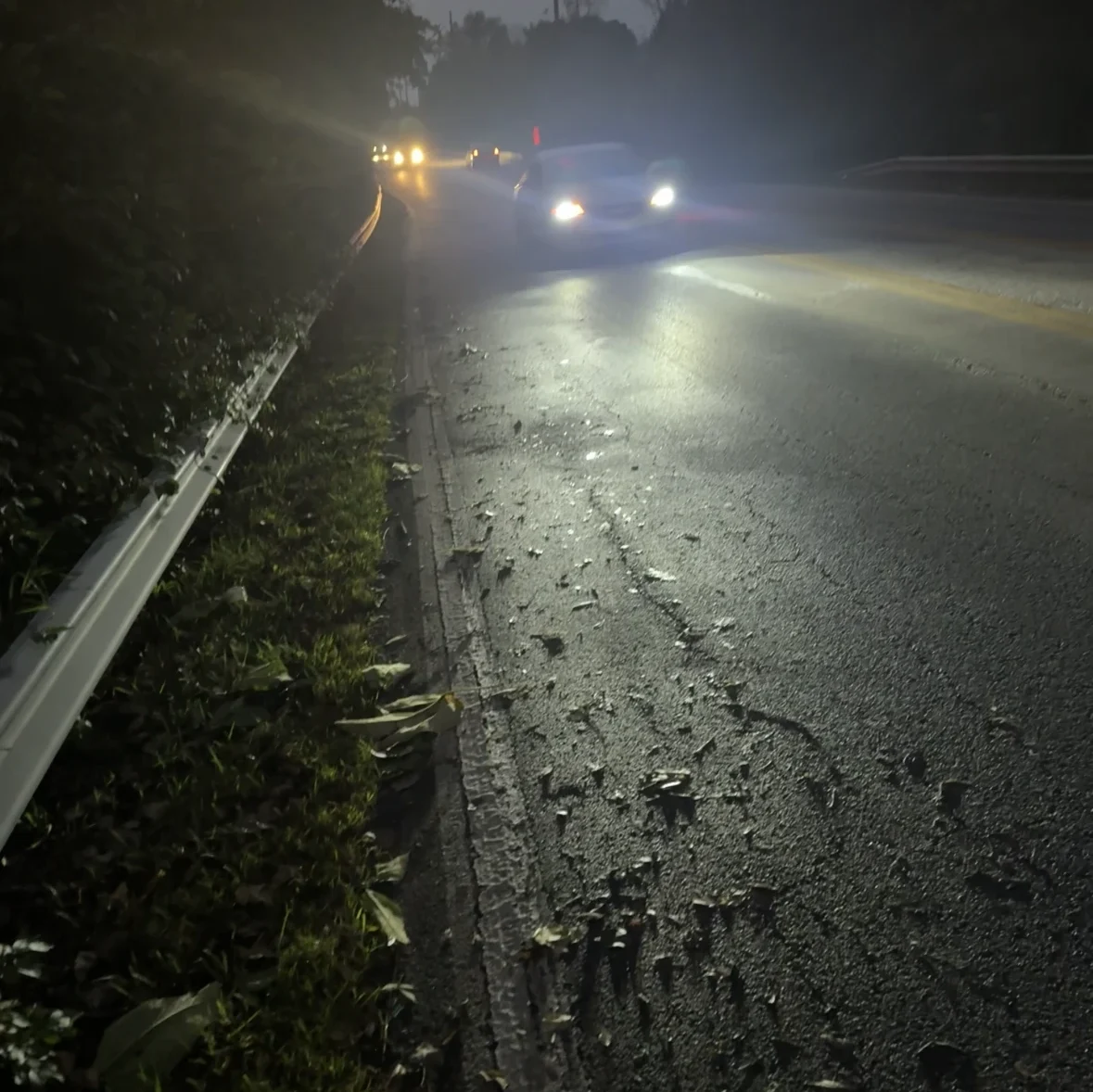
Last year, while traveling to Philadelphia, you were about to order a Lyft but decided to take SEPTA instead. Can you talk a little about that decision and what your thoughts were at the time? Did you feel more connected in a new city when you took transit?
Taking transit was more cost-efficient and I feel it is vital as planners we should walk the walk. If I had taken a Lyft, I would’ve been more apt to just put my head down and be on my phone, but taking transit reminds me to be present and pay attention to the city.
Taking SEPTA wasn’t difficult at all. I downloaded the app as soon as I landed and bought the fare. When I had a question about how the fare worked, other riders were nice enough to explain. I also think it helps to orient yourself by paying attention to landmarks as it helped me in Philly and remember where I was.
I usually opt for transit every time I travel to explore the city and get an idea of how connected it is.
Long before I had a car, I rode Valley Metro and it is exactly why I can orient myself easily. It also speaks to the importance of landmarks as way-finders in cities for those who are visiting. Another reason why I feel it is important for planners to use services and engage in the communities that we plan is to be able to understand the feedback that is given and ensure these projects are as seamless and efficient as intended.
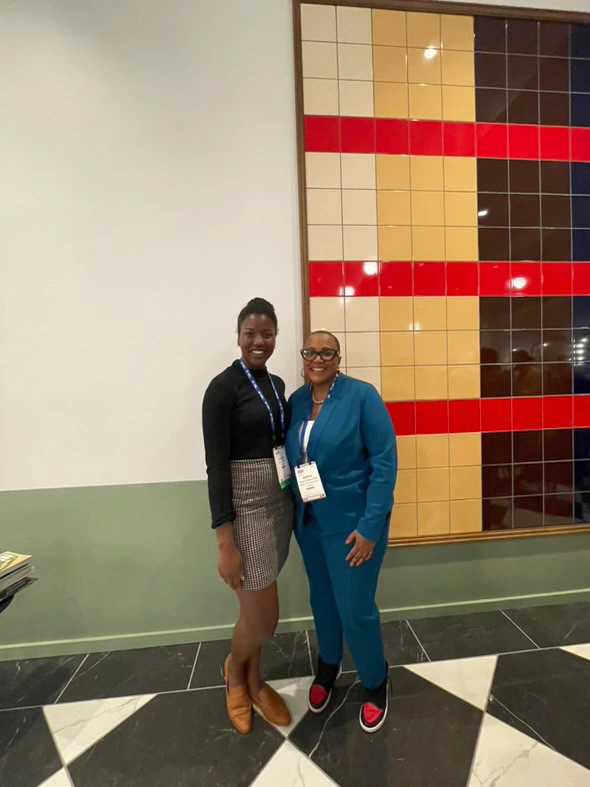
Transit Ahoy!
Has using public transit inspired any new ideas or passions for improving transit options in your own city? If so, what changes would you like to see?
I live in Tempe and I think the transit there is pretty solid. I think the Orbit is a free transit accessible to all incomes and has space for those in wheelchairs. It connects to the paid transit Valley Metro Busses and the light right. Phoenix on the other hand has a lot more land to cover, although I grew up taking the “Alex” bus in Awahtukee, which is a village within Phoenix. I’d love to see more of these free options equally distributed throughout other cities in the metro.
When I visited San Diego in 2022, I rode their On-Demand shuttle called the ‘FRED’. I loved it because it was free and I could order it like rideshare.
Do you think cities with robust public transportation systems create a stronger sense of belonging for newcomers or visitors? Why or why not?
I think robust transit has the ability to do both. The transit writers depend on the systems so they may feel a bit of ownership and belonging, naturally. Visitors and newcomers will eventually learn the system, and feel a sense of belonging because they know how to navigate the city independently.
What have been some of your most memorable experiences while using public transit, and how did those moments shape your view of cities?
My most memorable experiences using transit are when they’re intertwined with tourism or even historic preservation. When I was in Dallas, I got to ride this really cute trolley car near Klyde Warren Park. Usually and ideally these transit options are in touristy areas that give the rider a snapshot of the city.
Education in Urbanism
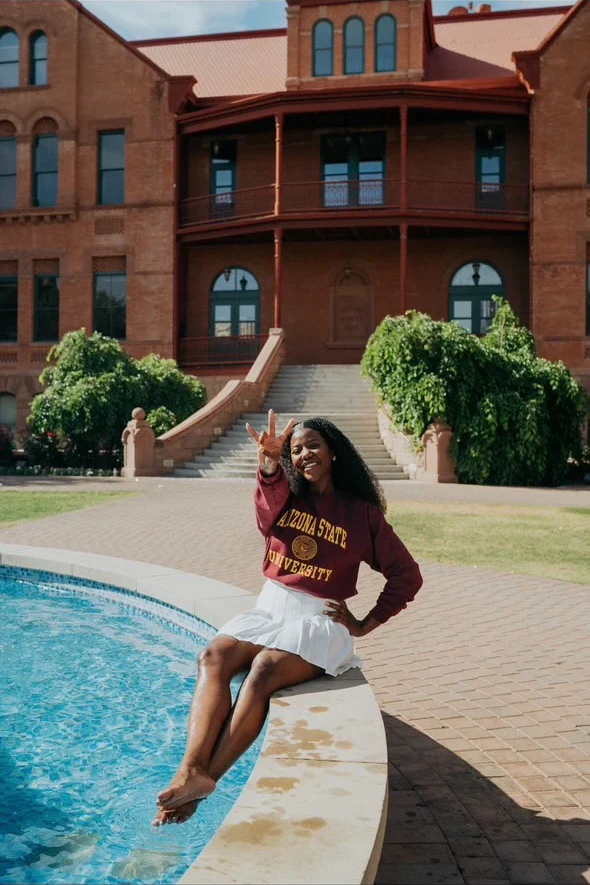
You initially studied media analysis before shifting to sustainability, and you took a class focused on urban resiliency. How did that transition shape your perspective on cities and their ability to adapt to change?
Taking that class really opened my eyes to the different types of vulnerabilities that the city has, and it honestly just made sense to build cities in the most resilient manner, but I know that there are complexities that come with it and making decisions for emergency management.
Children are often overlooked in the urban planning process. How out of place do you think children’s needs are in current city planning, and have you had any experiences with youth engagement that you can share?
They very much are and people don’t realize how smart the youth are. When I mentioned the accessibility issue with the lack of sidewalks, you could get a sense that some development doesn’t always prioritize people, so you can bet children are widely underrepresented in the planning process.
A favorite project of mine was one Skitch and I worked on with classmates. We created a youth engagement curriculum of activities to help the City of Phoenix update its 2025 General Plan. It ended up winning the Best Student Planning Project from the American Planning Association in 2023. I had so much fun working with kids and learning from them!!
Building Connections
Your explorations seem to connect you with a wide variety of people and places. How has your urbanism journey helped you build connections, both personally and professionally?
I’d have to give a huge thank you to career advisors and professors in grad school. We were fortunate enough to have funds provided to us for career development, which connected me to AZ planners in both the public and private sectors, and I had amazing professors who also connected me to job opportunities and mentors. I LOVE going to conferences because it’s like a big planning nerd convention to learn and connect!
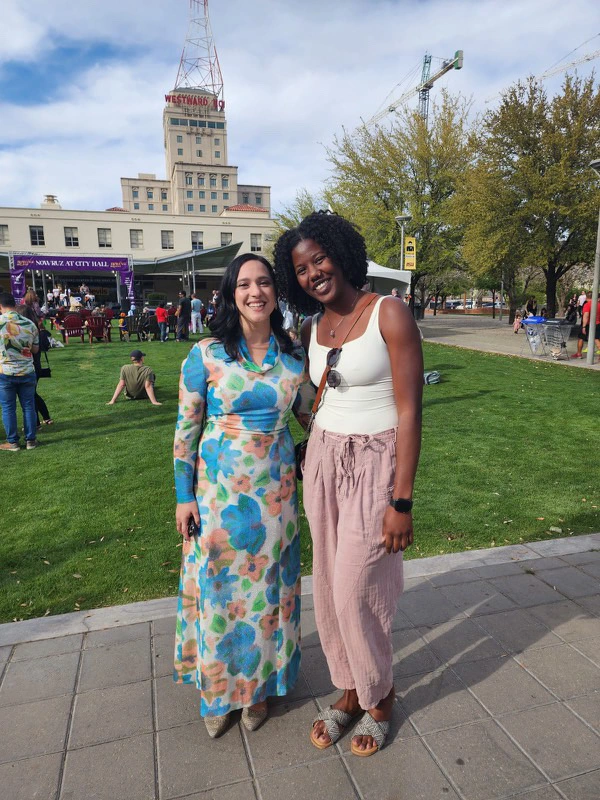
What role do you think cities play in fostering a sense of belonging and community for newcomers, and how can cities better embrace and support this?
Cities play a crucial part because they offer unique diverse social, cultural, and professional experiences that can help people connect and integrate.
Cities can support this through community and private partnerships (like Klyde Warren in Dallas), enhancing access for all, investing in public spaces (third spaces), and using resources like technology to promote the use of these spaces and to emphasize its reach.
Have you ever formed lasting friendship or collaborations with people you’ve met while exploring cities?
YES! My cohort and I were very close in grad school and I’m still connected to some of them because we share our wisdom. I have made strong connections to friends in federal jobs from conferences. I’d love to give a special shoutout to my day one mentor Laney Corey. She is a saint and was so helpful when I was researching the MUEP program and interested in becoming a planner.
What are some ways you have been able to build connections in your own community?
I believe I’m making them now through opportunities like this. I’d encourage others who want to connect to get involved with volunteer organizations like Urban Phoenix Project and Keep [insert city] Beautiful. There are also planning-related theme days like the most recent ‘PARK(ing) Day’,
IRL Planner
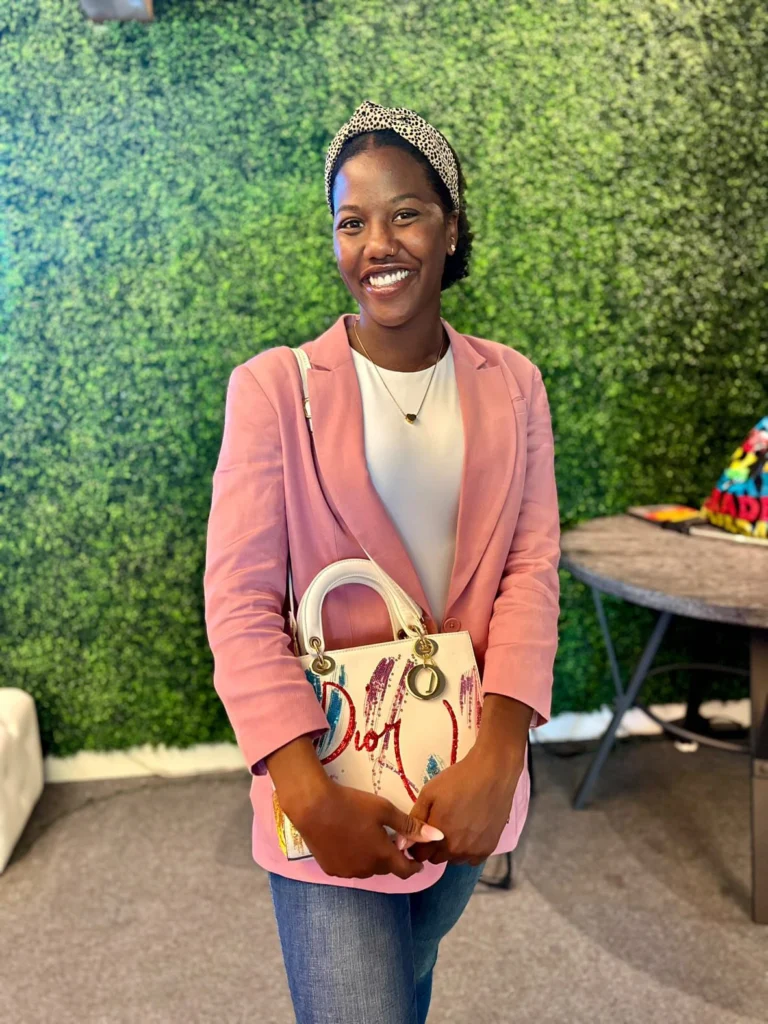
What is a typical day like for you as a city planner?
I attend weekly internal review meetings with other disciplines, meetings on legislative and process updates, I complete reviews on my projects, I meet with applicants, and I get to engage with the public with inquiries.
For our audience who may not know, can you explain what “Planner of the Day” is?
Planner of the Day is when you’re the first point of contact for people who come into the planning counter with questions or call with questions. You never know what questions you’ll get and who you’ll meet. Sometimes it is busy, but it depends on your staffing. My job does a pretty good job of equally dividing that responsibility, allowing me time to still get work done.
A lot of urbanists who are excited about cities go into planning without fully understanding the expectations of a planner. What is the reality of being a city planner, and could you also talk about other career paths planners can pursue in both the public and private sectors?
First, I’d recommend internships to get an idea of the work environment and what fits for you. Before my first job, I figured more of my job would be reviewing projects than creating the developments and that’s true for the most part. You may have some impact on design and intent, but I think you get more opportunities for creativity in an architectural or landscape design firm.
So far, I find the work to be rewarding with great responsibility. Being an urban planner involves balancing complex and often competing interests to shape the development and growth of cities that are always evolving.
Urbanists can stay in planning and get specialized like focusing on housing, transit, or economic development. one can pivot to federal jobs to shape funding for regional projects. You could pivot to private and work in urban design, or GIS to focus on geography, environmental planning, etc. The opportunities are honestly endless because urban planning is very multidisciplinary.
How can you as a city planner effectively advocate for better city design and more sustainable urban practices while working within the constraints of a municipal government?
If fortunate enough, start by choosing jobs that align with your values. Another way I can make a difference is by encouraging energy-efficient design to meet the goals of the general/comp plan, village or character area plans, or overall sustainability goals. Recommendations can be as small as suggesting exterior materials like paint or awnings that reduce solar heat gain or ground cover with a wider vegetative spread.

What advice would you give to someone interested in exploring a career as a city planner?
#1. Educate yourself on what planning is and what in planning interests you. This will help you find your niche.
#2. Do as many internships as you like to have an idea of what work environment to expect and what work YOU want to do as a planner.
#3. Celebrate the little wins and ways you can bring about change.
#4. Gain a general understanding of how your role in planning interacts with adjacent professions like civil engineering, architecture, and city management.
#5. Network! You never know who has the same passions as you or knows someone with an interest in what you find later to be your niche. Stay curious and remember, quality or quantity of connection. Staying connected also helps my outlook on the profession bright because there are so many people who have similar interests.
#6 Be easy on yourself, in planning, there’s a steep learning curve.
Closing
If you could redesign a part of Phoenix to better align with your vision of a vibrant, people-centered city, what changes would you make?
I would invest in more art and culture significant to Arizona. In the Southwest, we have the beautiful Chicano and Indigenous cultures to learn from. The Va’aki Museum (formerly Pueblo Grande Museum) has some of the original dwellings next to the canals built by the Hohokam People that are a vital part of our electric infrastructure. Investment provides a learning opportunity and history behind characteristics unique to Phoenix.
Is there anything we haven’t covered that you’d like to discuss or highlight about you?
Not really:) thanks for the opportunity to reflect!
Is there any current projects, initiatives, or organizations would you like to share? How can our listeners get learn more or support you?
Follow my Instagram page, @Whittakesthecity! and check out Urban Phoenix Project!
